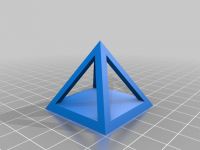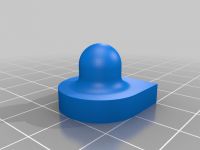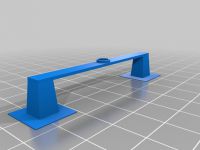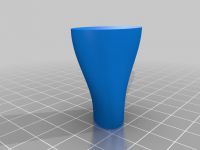Getting the best results out of your 3D printer requires some calibration.
Different materials and sometimes even different colors of the same type (and brand) of material may need slight different settings to get the best results.
Thingiverse hosts a large range of calibration parts. Depending on what you like to calibrate, there are parts for calibrating dimensions, stringing or other parameters that may be available.
Hollow calibration Pyramid
This hollow pyramid is used to test the retraction and temperature settings of your material.
If the retract settings are not good enough, a lot of stringing will occur. Temperature and cooling settings are important to prevent the thin bars of the pyramid to melt down.
If all settings are optimized, no stringing occurs, all bars have sharp corners, the touch perfectly at the top and the tip of the pyramid has a perfect point. Note however that it is almost impossible to get a perfect pyramid without any artifacts.
Surface Finish Calibration Test
There are a lot of different things to look for in the surface finish.
This part contains all kinds of different surfaces: straight vertical surfaces, a curved vertical surface a flat surface and a domed part.
If this part prints OK, then you have most of the parameters set for a good surface finish on your parts.
Bridge Torture Test
The Bridge Torture Test is the ultimate test to verify bridging abilities of your printer.
You need an optimal combination of temperature, cooling and the feed rate of your material.
When the cooling of your printer is not enough, this bridge will not print correctly. It may collapse completely or a lot of loose filaments will be hanging from the bridge.
To print this thing on a Leapfrog Creatr, make sure you have enough cooling on the extruder. I have not seen any of these printed on an unmodified Creatr.
Cooling System Test
The nozzle cooler, which actually is a product cooler since you don't want to cool the nozzle but the material that was just printed, determines for a large part the surface quality of the objects you print.
This model, called "Racing Vase", was made to test how fast your printer can race while still resulting in a good quality product. I have not tested this model yet but this seems a good test object for comparing cooler options.






